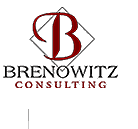How
Consultants Help Leaders Get Buy-in
By
Randi S. Brenowitz, MBA, CMC and Marilyn Manning, Ph.D., CMC
This
article appeared in the IMC Times Fall 2002
As the global marketplace becomes more dynamic and competitive,
organizations must become more efficient, effective, and productive.
To do this they need to become more dynamic and flexible and move
away from a "command and control" leadership style.
The role of the manager is shifting to that of a team leader and
team builder. The new leaders must have buy-in to the decisions
being made rather than simply relying on their position in the
hierarchy to get results. As consultants, we frequently find ourselves
in the position of helping managers get buy-in for a variety of
decisions and disciplines. We need to work with leaders and managers
and help them understand that the four key ingredients to achieving
buy-in that are discussed below.
Safe
and Trusting Environment
Creating
a safe and trusting environment involves people's willingness
to take some risk and expose their own ignorance or their unpopular
opinion. When leaders are willing to ask questions and admit that
they do not have all of the answers, members of the team will
be more likely to do the same. Consultants can help leaders model
this behavior in their organizations as a key first step to building
a trusting environment.
A
safe and trusting environment does not mean that each member of
the team agrees with everything being said by everyone else. Some
conflict is both inevitable and even desirable in every team.
This will feel counter-intuitive to many leaders and we need to
help them realize that some level of productive conflict should
be encouraged, with the understanding that too much conflict can
weaken trust and destroy the team.
Once
a safe and trusting environment is created, people are ready to
buy-in -- both to decisions and their implementation.
Agreements
and Norms
Another
key element for achieving buy-in is a strong set of agreements
and norms about how the team will behave and how the members will
treat each other. If a team doesn't have clear, measurable agreements
or norms, it should consider holding a session to develop them.
The following 4 steps may prove helpful at such a session:
For
example, "respect" may be one of the values agreed to
by the team. It is needed to build loyalty and mutual trust, key
ingredients in getting buy-in. We can reinforce respect by seeking
others' input regarding decisions that may affect them. On the
other hand, we undermine respect when we change direction without
giving others an explanation.
It
may prove to be more manageable to set only a few ground rules
at a time and then to build from there. When the team keeps its
focus, the chance for success is greater. Consider asking your
team: "What are the behaviors our team needs to focus on
for the next quarter?" When a team fully participates in
defining and enforcing the norms, a new level of ownership and
buy-in is possible.
Readiness
and Follow-up
When
decisions are reactive and not well planned, you may find yourself
stuck in a defensive cycle. Many employees view rushed decisions
as a threat and become defensive, reacting with a range of behaviors
from blaming to avoidance. On the other hand, when a decision-making
process is well planned, your team can function much more productively.
The
following steps should help you get your team open to and ready
for the decision-making process. Your team may resist participating
because they are suspicious or fearful of the impact or risk in
certain decisions. Part of readiness is alleviating fears as much
as possible.
-
Establishing
Benefits and Needs: Work with the team to identify major
issues, articulate timelines, and assess resources needed
to come to closure.
-
Readiness: Discuss past decisions and learnings.
What has worked well and why? Which have failed and why?
Make sure you give people ample time to talk about resistance
and fears as well as what they expect from you and from
each other. You may want to consider inviting your boss
to a team meeting to articulate his or her vision for the
organization and to help set the groundwork for the decision-making
process.
-
Congruence:
You should relate decisions to the mission and values of
the team and organization. Mission-driven organizations
are more efficient and achieve a higher level of buy-in
than rule-driven groups.
-
Communications and Follow-up: No one likes surprises,
so open lines of communication, both formal and informal,
are essential for assuring buy-in. Formal communication
forums include staff meetings, regular management team meetings,
all hands meetings, internal newsletters, and one-on-ones.
These
are opportunities to keep everyone informed, to celebrate successes,
to offer some skill building, to hold open dialog, and to let
people know how and when you have used their ideas.
Shared Decision-Making Process
When
people participate in decision-making, they are more likely to
buy-in to it fully. The time lost in collective decision-making
is regained at the implementation stage.
The
most common form of collective decision-making is consensus. Consensus
is a mutual agreement among members of a group where all legitimate
concerns of individuals have been addressed. Many leaders confuse
consensus with a unanimous vote. We may need to educate them and
their organizations that consensus is actually an agreement to
move forward with a decision each member of the group is willing
to support even if they think it might not be the best possible
decision. Consensus building can foster creativity and innovation,
cooperative attitudes, improved interpersonal communications,
and increased accountability. It takes time, however, so it is
not the best way to make insignificant decisions. Rather, it can
be highly effective for those decisions that have significant
impact on the work of the group where buy-in is essential.
Conclusion
The
most significant help that consultants can give to leaders is
the understanding that achieving buy-in is not a singular event.
Rather, it is a continuing process that includes the elements
described above. Ongoing solicitation and implementation of the
team's ideas promotes participation and can positively impact
morale, productivity, and level of ownership and buy-in.


